Latest News
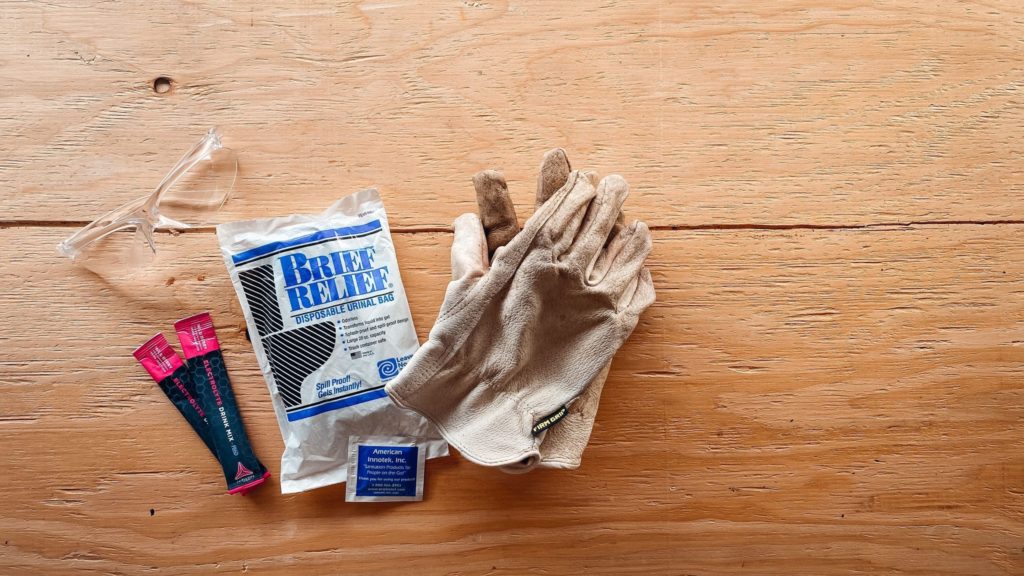
[vc_row][vc_column][vc_column_text]
In the age of this global COVID-19 pandemic, it is important for everyone to remain as healthy and hygienic as possible. While on the front line, first responders, FEMA & Red Cross workers, military personnel, utility and construction workers, and medical staff must interact with the general population. It is uncertain which individuals are infected with the coronavirus since not everyone shows symptoms. These brave individuals put themselves at risk in order to assist those in need. Brief Relief can keep things safe and sanitary and is the best choice when local facilities are unavailable.
During these long shifts, many of these personnel must utilize the closest restroom available. Rather than continuing to use local toilets that may or may not have been recently sanitized, Brief Relief products allow those on the front line to answer nature’s call in the most sanitary way possible and reduce the spread of COVID-19.
[/vc_column_text][vc_column_text]
Waste Bag Containment System & Environmentally Safe Products
Depending on the material of a toilet seat, stall handle, and sink knob, the COVID-19 virus can survive from a number of hours to a number of days in a public bathroom. While many facilities are doing all they can to keep conditions sanitary, personnel and staff cannot be certain if the bathroom has been recently cleaned or not. During grueling 12 hour or more days, it can be difficult for these brave individuals to find a safe and hygienic area to use the bathroom. By using public toilets, they put themselves at risk for contracting the very virus they are battling against.
Fortunately, Brief Relief products can be used in any setting and provide a hygienic method to relieve one’s self. The following products can help anyone in the hospital, FEMA & Red Cross sites, utility and energy sectors, and military response areas reduce the likelihood of contracting and spreading the virus from a public bathroom:
• Portable Toilet Waste Bags: Suitable for both liquid and solid waste, these disposable waste bags for portable toilets allow those on the front line to easily relieve themselves in nearly any environment. They can be used on their own or combined with a portable toilet.
• Commodes Systems and Toilet Seats: A commode is a practical solution to digging a latrine outdoors. Available with a riser and toilet seat for comfort, a commode mimics a traditional toilet. These systems should be combined with Brief Relief waste bags to ensure maximum hygiene.
• Privacy Shelters: Those who do not wish to complete their business with everyone watching can escape to a privacy shelter and relieve themselves with peace of mind. The shelter is easy to set up and repels water during storms. With an inner zipper and lock, responders do not have to worry about someone walking in on them.
[/vc_column_text][vc_column_text]
Additional products that FEMA & Red Cross workers along with first responders, military personnel, utility and construction workers, and medical staff can benefit from during the COVID-19 pandemic include disposable hand wipes, fluid tactical electrolyte mix, and heat relief towels. The wipes allow front line workers to remain hygienic even when no hand washing stations are available. They are biodegradable, which makes them perfect hygienic environmentally safe products! Fluid tactical electrolyte mixes come in a variety of flavors and replace all vital electrolytes at the same ratios as they are lost in sweat. The heat relief towels ensure those who are working stations outdoors do not experience heat stroke. It’s important to keep those on the front lines as safe and comfortable as possible!
Safe & Hygienic Bathroom Options When You Need Them Most
Brief Relief products are designed with everyone in mind. Men and women who risk exposure to COVID-19 by utilizing public restrooms will find it is safer and more hygienic to use our environmentally safe products. Our disposable waste bags for portable toilets are approved to be thrown away in trash cans in any state or province. With the polymers and enzymes in our waste bags, urine and stool are biologically broken down to become safe for disposal. With a shelf life of 10+ years, you do not have to worry about any of our products breaking down throughout the COVID-19 pandemic.
If you have any questions or need assistance placing an order for your first responders team, please do not hesitate to contact us today! Those who are ordering on behalf of the U.S. Military are encouraged to contact Louis Ortego directly at (858) 354-5034 or [email protected].
[/vc_column_text][/vc_column][/vc_row]

[vc_row][vc_column][vc_column_text]
How Brief Relief is helping workers stay healthy and productive
[/vc_column_text][vc_column_text]The CDC released recent findings that COVID – 19 “SARS-CoV-2 RNA” was identified on surfaces for approximately 5 days. Your employees are especially at risk from COVID-19 infection in small places like public bathrooms. Now, more than ever, its vital that you keep your employees healthy and safe from infection.
Our goal at Brief Relief is a safe, hygienic, and productive workplace wherever your employees conduct their daily tasks. Brief Relief is trusted by thousands of mobile workers everyday. Restroom facilities are becoming very limited and the available alternatives are a health hazard to your employees. Brief Relief is helping prevent the spread of COVID-19 by:
[/vc_column_text][vc_column_text]
- Providing small on-the-go restroom solutions that can be easily carried by workers up any wind tower or set up on most trucks – keeping crews in the field from coming into contact with non-sanitary facilities.
- Including an antimicrobial wipe in each product to aid in personal sanitation.
- Making our products to be safely disposed in any trash receptacle after use.
[/vc_column_text][/vc_column][/vc_row][vc_row][vc_column][vc_column_text]
Download our data sheet to learn how Brief Relief products can keep your workers safe and healthy on the job site.
[/vc_column_text][/vc_column][/vc_row]

[vc_row][vc_column][vc_column_text]Not all forward operating bases (FOB) are the same. Smaller FOBs have limited services and resources with soldiers making do with the most basic equipment and facilities. There may be limited electricity, no hot showers, no running water, and no toilets that flush.
Daily life without plumbing for the army typically means using outhouses with sewage containment tanks. However, the problem with outhouses, porta-potties, or bathroom trailers is that they need regular servicing to prevent the spread of bacteria and disease.
Fortunately, there’s an alternative to outhouses that is not only more sanitary, less work to maintain, highly portable, but also more cost-effective. [/vc_column_text][vc_column_text]Benefits of Field Lavatory Systems over Porta-Potties
The Brief Relief Field Lavatory System is a portable sanitation system for soldiers living at an FOB or on the move. The whole system only weighs 18 lbs, making it easy to transport. It also takes no more than 2 minutes to deploy completely, and it can be set up virtually anywhere. Unlike the porta-potty or other types of outhouses, it requires no prep or servicing.
The field lavatory system includes a privacy tent, a commode with a full-sized toilet seat, and a supply of waste bags. Waste Bags use specialized gelling technology to create unique waste alleviating solution. Brief Relief portable waste bags are odor-free, puncture-proof, spill-proof, and landfill-safe. For added hygiene, the waste bags come with plenty of toilet paper and antimicrobial wipes.
Brief Relief waste bags change the composition of the waste, converting it into a deodorized gel. The waste bags contain a special formulation with a polymer component designed to contain and encapsulate the waste immediately. The enzyme component in the powder formulation accelerates the complete biological breakdown of urine and stool to its most basic parts. This process ensures the waste bag and its contents are safe for disposal in any regular trash receptacle.
The shelf life of an unused Brief Relief waste bag is virtually unlimited. It’s been tested by the U.S. military which rated the shelf life of the product at ten years plus. It is 95% active even after five years of storage. The portable waste bags are also ideal for each member of the army to store in their gear so they will always have a bathroom solution within reach.
The privacy tent is water repellent, non-conductive, and flame resistant; it meets CPAI-84 standards. To prove how durable the tent is, the Everest 98 Environmental Expedition tested them in extreme conditions for four weeks at 18,500 feet. The Brief Relief privacy tents endured below-freezing temperatures and intense heat exposure and radiation from the sun; the tents even survived a yak stampede.
The Field Lavatory System’s commode bucket will not crack or melt. It is manufactured from heavy-duty polyethylene; it boasts a thick wall to resist becoming brittle in extreme cold or soft in extreme heat. It uses the same material and build as buckets designed to store and transport hazardous chemicals safely. It even comes with a seat manufactured from industrial-grade polyurethane that also resists damage or degradation. For added comfort, the commode is the height of a regular toilet. [/vc_column_text][vc_separator][/vc_column][/vc_row][vc_row][vc_column][vc_column_text]
To learn more about how Brief Relief is changing the living conditions for those on long deployments, check out our product line.
[/vc_column_text][/vc_column][/vc_row]
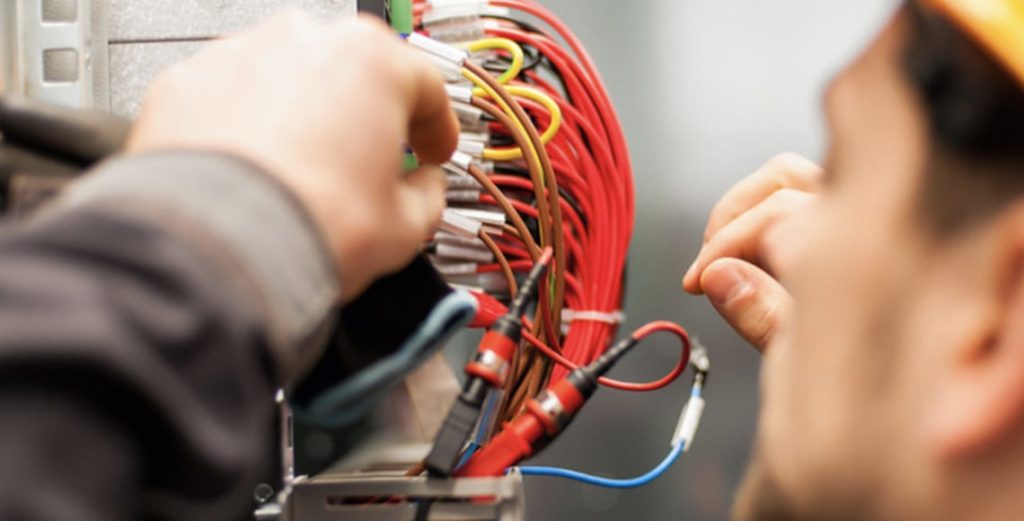
[vc_row][vc_column][vc_column_text]When electricians need to leave a job to find a bathroom, their days become longer. And when you add up all the time lost to bathroom breaks that require you to leave the job site in search of a running toilet, you realize how many service call opportunities may have been missed.
Evidently, this means lost profits.
The urge to relieve yourself can also be distracting, forcing you to lose focus on your work. Locating a neutral wire or analyzing the cause of a malfunction can take you all day. The last thing you need is the distraction that comes with not knowing where you can relieve yourself.
Emergencies also pop up all the time. Your day may involve going from one facility that has lost all power due to a blown transformer to heading to a residential home where an electrical malfunction needs to be contained. Diverting your attention to search for a bathroom may keep you from arriving at an emergency in time to prevent electrocution or fire. [/vc_column_text][vc_column_text]
The Benefits of Storing a Privacy Tent, Portable Commode, and Waste Bags in Your Service Van
By storing a personal lavatory system in your service van, you will always have a bathroom solution within reach. The Brief Relief Portable Lavatory System comes complete with a privacy shelter, commode, and supply of waste bags. Waste Bags use specialized gelling technology to create unique waste alleviating solution.
The whole system only weighs 18 lbs. The privacy shelter sets up and breaks down quickly; it comes with a carry case that makes storing it in the service truck easy. Its opaque gray fabric offers full privacy even in full sunlight conditions.
The portable commode comes with a full-sized flexible toilet seat. Because the commode is the size of a standard 5-gallon pail, it also stores away without taking up much space. The commode has also been weight tested, easily surviving a 300-lb test that lasted 12 hours.
Brief Relief’s patented waste bags come with safe polymers and enzymes that treat waste and convert them into a deodorized gel. The liquid waste bag holds up to 20 oz of urine while the Disposa-John handles both liquid and solid wastes. For added hygiene, the Disposa-John comes with ample toilet paper and antimicrobial wipes.
All Brief Relief products are made with non-toxic materials and conform to OSHA and EPA regulations. The portable waste bags are odor-free, puncture-resistant, spill-proof. Because Brief Relief waste bags are land-fill safe, you can throw them away in any regular trash can in any state or province.
As long as you properly use and seal the waste bags, there is no chance they will leak. The gel is self-sealing; the enzymes neutralize the waste by breaking down the waste into simple salts and water.
Brief Relief products are currently being used by the top 100 utility companies in the U.S. and Canada, municipalities, construction companies, government agencies, and the U.S. and Canadian militaries. In fact, some companies have been using Brief Relief products for almost twenty years. [/vc_column_text][vc_separator][/vc_column][/vc_row][vc_row][vc_column][vc_column_text]
To learn more about how Brief Relief improves productivity and cost-savings for electricians, view our product line.
[/vc_column_text][/vc_column][/vc_row]

[vc_row][vc_column][vc_column_text]When the Bureau of Land Management was formed more than 70 years ago, we didn’t know as much about the environmental impact of human waste left in the wilderness as we do today.
Today, we know that urinating or defecating closer than 200 meters from a water source can contaminate it. We also know now that the viruses in human excrement can survive for weeks at low temperatures as they wait for a new host. And, with global warming melting snow in areas that have remained frozen for generations, we now realize that the feces left behind didn’t break down and may resurface.
Managing public lands and resources to sustain their health and diversity is a huge responsibility that we all must contribute to today to help both the present and future generations. Because of limited resources, the BLM cannot clean up public lands entirely on their own. However, they can promote the best practices to help prevent the problem from growing and help restore the former beauty of these lands.
The BLM aims to educate all nature-lovers and visitors to public lands on how to be responsible with their waste. Squatting on the ground and relieving yourself in the wilderness should no longer be an option; it spreads disease-causing pathogens and diseases, harming wildlife, nature, visitors, and neighboring communities. [/vc_column_text][vc_column_text]
Packing Out Human Excreta with Portable Waste Bags
A sanitary solution for packing out waste when visiting public lands is available in the form of portable waste bags. Waste Bags use specialized gelling technology to create unique waste alleviating solution. They are safer than using porta-potties and outhouses, which are notorious for their stench and for being contaminated with bacteria and disease, particularly if they are overflowing and haven’t been serviced in weeks due to budget constraints.
The Brief Relief Liquid Waste Bag is designed for urine, while the Disposa-John is designed for both liquid and solid waste. The waste bag for liquid waste can handle a full 20 ounces of urine, making it ideal for long hikes and overnight trips in the backcountry. It has a wide opening with a semi-rigid rim, making it easy to use for both men and women.
The Disposa-John safely contains and neutralizes both liquid and solid human waste thanks to a patented gas-impervious triple-barrier bag design. For added hygiene, the Disposa-John comes with ample toilet paper and antimicrobial wipes that you can throw in the bag before cinching it shut and sealing it.
Brief Relief portable waste bags are odor-free, puncture-proof, and spill-proof. Both Brief Relief portable waste bags contain a sophisticated blend of polymers and enzymes that change the composition of the waste, accelerating its breakdown. The waste is encapsulated, eliminating odor in the process, and converted into a gel state.
Because all Brief Relief waste bags are puncture-resistant and spill-proof, you can roll the used bags up and safely store them in your backpack. Brief Relief waste bags are non-toxic and landfill-safe and can be disposed of in any regular trash can. [/vc_column_text][vc_separator][/vc_column][/vc_row][vc_row][vc_column][vc_column_text]
To learn more about Brief Relief and why they are perfect for outdoor professions and leisure, visit our products page.
[/vc_column_text][/vc_column][/vc_row]
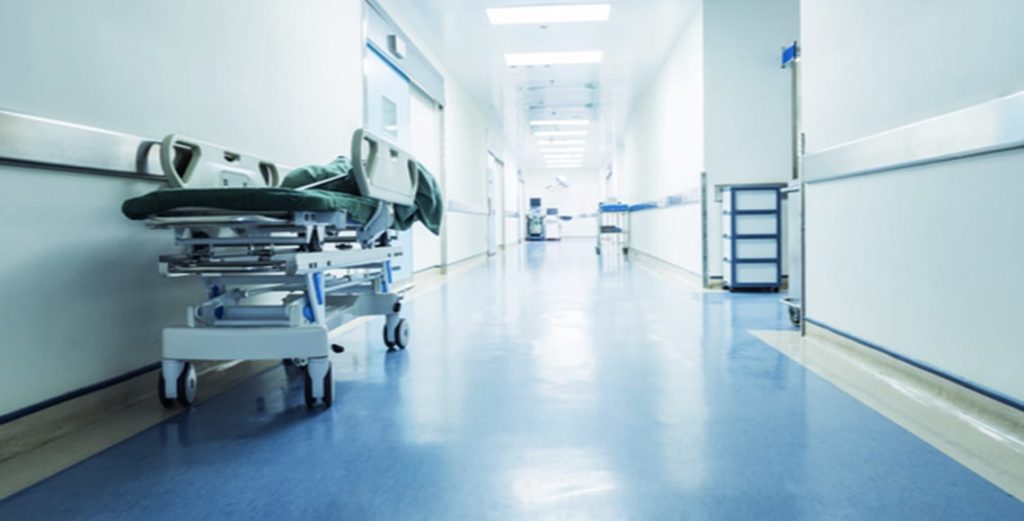
[vc_row][vc_column][vc_column_text]From urine to stool to vomit, human waste products come in different forms. In a typical setting, exposure to human wastes is hazardous enough as it spreads disease. It’s even more worrisome in hospitals where people are already sick, and their weakened immunities need to be kept in a sterile environment.
Waste bags can offer hospitals a more hygienic solution to the management of human waste, allowing them to keep hospital rooms clean for their patients and other attending staff. Waste Bags use specialized gelling technology to create unique waste alleviating solution.
Brief Relief Waste Bags contain sophisticated polymers and enzymes that transform human wastes into a deodorized gel. The waste bags are made with a sturdy triple barrier bag design and non-toxic materials that make them puncture-resistant, spill-proof, and odor-free. [/vc_column_text][vc_column_text]
Using Waste Bags to Keep Hospitals Clean
Waste bags like the Brief Relief Liquid Waste Bag are ideal for hospital staff who help patients empty their catheter bag. Attempting to drain the bag into the toilet is challenging as it requires the patient to stand up and make the trip to the bathroom. In many cases, the patient may be unable to do so, and the nurse will need to drain the bag into a container which they will later empty into the toilet.
With a Liquid Waste Bag, there’s no need to catch the urine in a different vessel. The catheter bag’s drainage tubing can be positioned to allow the urine to drain directly into the waste bag. A waste bag can eliminate the process of collecting urine in a separate container or bedpan, which will need to be sanitized with bleach and water with every use.
With Brief Relief waste bags, the liquid wastes immediately activate the gelling process and eliminate the risk of spillage. Even if the waste bag is dropped on the floor by accident, the contents will not make a mess.
For emptying a colostomy bag, the Brief Relief Disposa-John is the solution. There’s also no need for the patient to walk all the way to the bathroom to drain their ostomy bag or potentially contaminate a separate container. The Disposa-John was designed to handle both liquid and solid wastes by using the same polymers and enzymes found in the liquid waste bag. The wastes are also converted into a deodorized gel.
For patients who may be prone to vomiting, particularly after surgery, Brief Relief waste bags can help hospital staff minimize the spread of disease and contamination. Instead of throwing up in a pail that may be left exposed and uncleaned for a while, patients may vomit in a waste bag that will convert the bile into a gel. The waste bag seals securely and will mitigate the risk of spreading bacteria.
Because all Brief Relief waste bags are made with non-toxic materials, they’re landfill-safe and can be thrown away in a regular trash receptacle. [/vc_column_text][vc_separator][/vc_column][/vc_row][vc_row][vc_column][vc_column_text]
To learn more about how many hospitals include Brief Relief products in their cleaning best practices, please visit our products page.
[/vc_column_text][/vc_column][/vc_row]
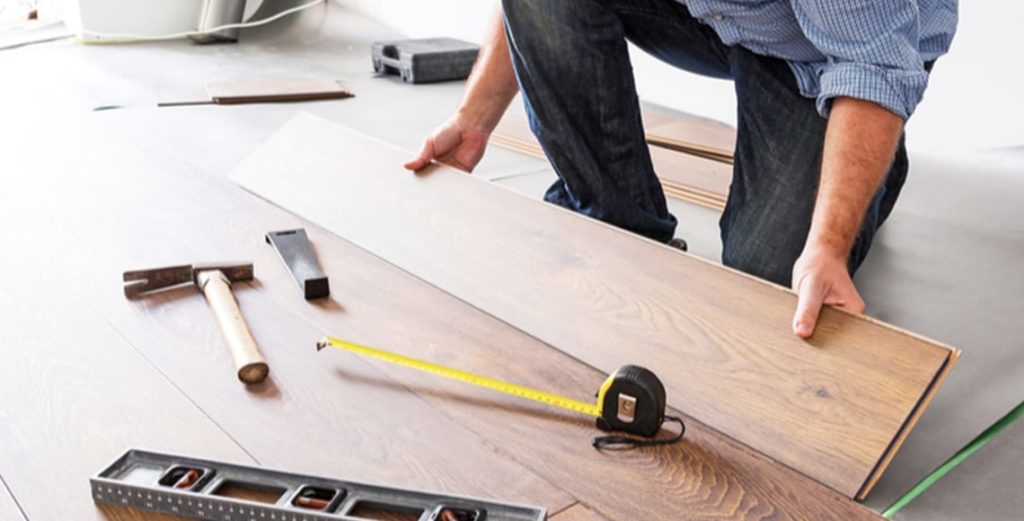
[vc_row][vc_column][vc_column_text]As a flooring installer working on different types of flooring in both residential and commercial buildings, you know the challenges of finding a bathroom when you need it.
In many cases, the building where you’re installing flooring is still under construction. The plumbing may not be installed or working yet. While there’s the option to use the construction site’s porta-potties, we all know that outhouses aren’t the most sanitary options as dozens of workers on the site share them. Also, they’re probably not very accessible as porta-potties have to be set up a distance away from the site, so as not to obstruct pathways for the crew and driveways for the trucks and heavy equipment.
Fortunately, there’s a solution that is sanitary, convenient, and most importantly, portable. The Brief Relief Portable Lavatory System is like carrying a personal bathroom stall. The system includes a privacy tent, portable commode, and a supply of waste bags. Waste Bags use specialized gelling technology to create unique waste alleviating solution.[/vc_column_text][vc_column_text]
The Convenience of a Portable Commode and Waste Bags
If you’re in the middle of installing flooring and feel the urge to relieve yourself, you can skip the porta-potties. There’s no need to hold it in and put your bladder health at risk. You can also stop considering urinating behind a tree or bush and potentially getting in trouble with the law.
Instead, you can go to your truck and pull out the lavatory system; the whole system weighs only 18 lbs and packs away neatly. The privacy tent collapses and fits in a carry case while the commode makes a sturdy base to hold a full-size flexible toilet seat. It includes a tight-seal screw on gamma-lid to store and transport your sanitation supplies when out on a job.
You can set up the privacy tent right next to your truck. It is easy to set up and break down. Its opaque color guarantees complete privacy as does the zipper locks on the inside. For your comfort, the commode is the height of a standard toilet. Choose between the Brief Relief Liquid Liquid Waste Bag or the Disposa-John.
The Brief Relief Liquid Waste Bag can hold up to 20 oz. of urine, while the Disposa-John’s triple barrier design was made to seal both liquid and solid wastes safely. All Brief Relief waste bags contain a unique blend of polymers and enzymes that are activated by wastes, breaking them down and converting them into a deodorized gel. The waste bags are odor-free, puncture-resistant, and spill-proof. Because all Brief Relief products are made with non-toxic materials, they are landfill-safe and can be thrown away safely in a regular trash bin.
Alternatively, you can pack Brief Relief waste bags with you on-site. Even if the toilets in the commercial building or residential home aren’t fully functional yet, you can use them for privacy as you use a waste bag. Once you’re done, seal the bag shut and throw it away in any trash receptacle. [/vc_column_text][vc_separator][/vc_column][/vc_row][vc_row][vc_column][vc_column_text]
To learn more about how Brief Relief can help you focus better on your job, check out our line of products.
[/vc_column_text][/vc_column][/vc_row]
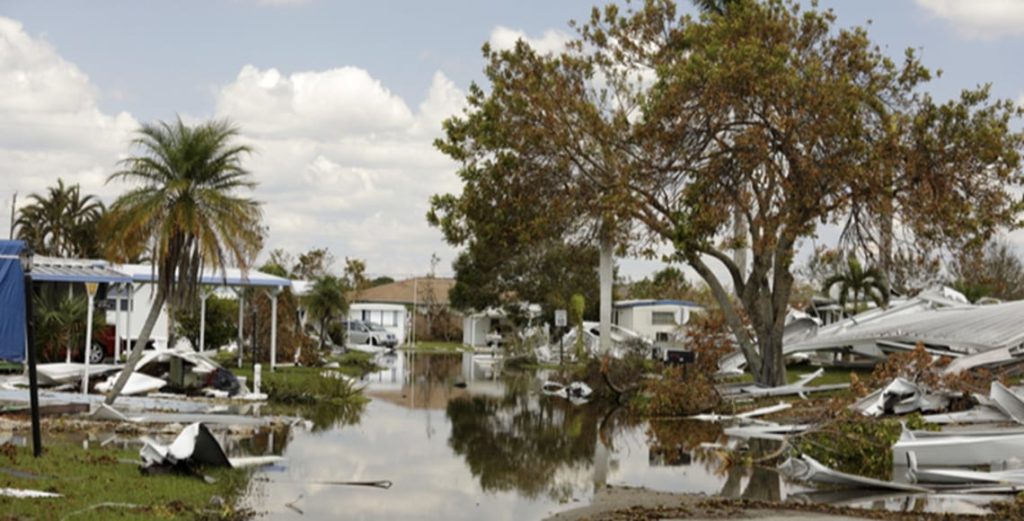
[vc_row][vc_column][vc_column_text]Hurricanes leave behind a lot of destruction, but they also leave us with valuable lessons and provide us with opportunities to train and prepare for the next one.
When preparing emergency preparedness kits, many have failed to identify one of the most basic human needs in times of disaster apart from clean water, food, and shelter; the need to use the bathroom. From first responders to volunteers and civilians, people need a restroom and with no running water after a hurricane, it’s not that simple.
But, here are some safe and sanitary solutions that allow people to always be prepared in the devastation that follows a hurricane. [/vc_column_text][vc_column_text]
Waste Bags for First Responders During Search and Rescue Operations
While everyone else is evacuating, first responders mobilize, rush into the hurricane’s path to aid in disaster preparation and provide aid as quickly as possible. In the aftermath, flooding doesn’t only make it challenging for first responders to reach civilians trapped in their homes, but it also means no access to toilets.
With no accessible or functioning bathroom in sight, portable waste bags offer first responders a sanitary, convenient, and portable solution. Waste Bags use waste alleviation and gelling technology to fulfill sanitary toilet functions.
The Brief Relief Liquid Waste Bag is an individually packaged bag for urine while the Disposa-John is a triple barrier bag for liquid and solid waste. The liquid waste bag has a wide opening with a semi-rigid rim, which means both men and women can use it; its one-way valve prevents spillage.
For added hygiene, the portable waste bags include antimicrobial wipes. All Brief Relief waste bags contain a sophisticated blend of polymers and enzymes that break down and convert wastes into a deodorized gel. The portable waste bags are odor-free, puncture-resistant, spill-proof, and landfill-safe. [/vc_column_text][vc_column_text]
Portable Lavatory Systems for Civilians at Evacuation Centers
Because water is typically one of the first utilities to be shut off after a calamity, using the bathroom in an evacuation center or other shelters such as schools will not be an option – leaving porta-potties as the go-to bathroom solution to accommodate the community.
However, we have learned that overcrowding leads to health issues at evacuation centers. Living in such close proximity and the sharing of toilet facilities that may not be getting cleaned as often as they should ultimately can lead to the spread of disease.
Brief Relief offers a solution that is a more sanitary alternative to porta-potties that eliminates contamination and spread of viruses and bacteria.
The Brief Relief Portable Lavatory System comes complete with a privacy shelter, commode, and supply of waste bags. Unlike the porta-potty, a portable lavatory system doesn’t need to be serviced. Because roads may be inaccessible after a hurricane, trucks may not be able to remove out the sewage from the porta-potties’ collection tanks regularly.
With the portable lavatory system, you will have privacy and a commode that is the height of a regular toilet. Because all Brief Relief waste bags are non-toxic and landfill-safe, they’re safe to dispose of in any regular trash can. [/vc_column_text][vc_separator][/vc_column][/vc_row][vc_row][vc_column][vc_column_text]
To learn more about how Brief Relief helps both hurricane first responders and the civilians they support, please visit our products page.
[/vc_column_text][/vc_column][/vc_row]
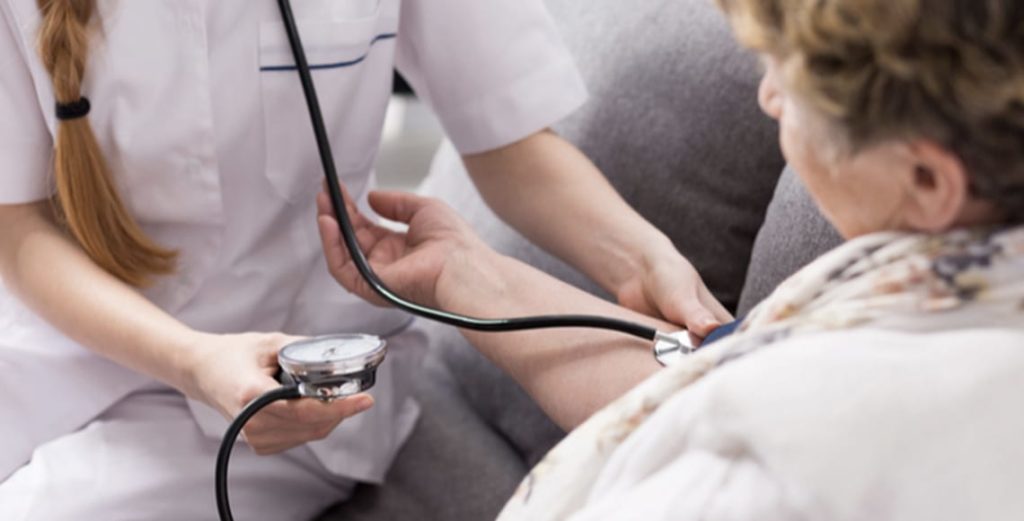
[vc_row][vc_column][vc_column_text]More and more hospitals now offer private duty care to patients who, once discharged from the hospital, need assistance at home. Most patients who need home care are elderly, special needs, injured, or recovering from major surgery. They will need help with taking their medication, caring for their wounds, or monitoring their IV.
Because patients will have limited mobility or may be bedridden, personal care attendants will likely assist with a roster of daily activities, and the bathroom needs of a patient are probably not the most glamorous. Depending on the patient’s needs, the private duty care nurse’s role will involve helping patients to the toilet, assisting them with a bedpan, emptying a drainage bag, or changing diapers.
Because of all the medication patients take, their urine and feces may be infectious or contain toxic medicine residues. Therefore, soiled diapers and bedside containers that collect urine and feces may have traces of infectious microorganisms and may be hazardous to the attending nurse and anyone who lives in the patient’s home.[/vc_column_text][vc_column_text]
Why Waste Bags are Safer, More Sanitary, and Easier to Use
Waste bags offer nurses a better waste management solution that is safer and limits the spread of disease. Waste Bag is an industry standard term that stands for ‘Waste Alleviation and Gelling Bag.’ Because of the waste bag’s triple barrier bag and liner design, the bags are odor-free, spill-proof, and puncture-resistant. They’re landfill-safe and can be disposed of in any regular trash receptacle.
Waste bags will convert urine, feces, or vomit thanks to its special blend of polymers and enzymes. Once the wastes are converted into a gel and the bag is closed shut, any bacteria or residual medicine toxins will be sealed in. They will also seal in the odor, keeping the patient’s home smelling cleaner and free of the smell of human waste.
With waste bags, patients don’t need to be assisted or carried to the toilet whenever they need to use the bathroom. They’re also less messy than bedpans. With waste bags, the waste activated gelling works as soon as the waste hits the inside of the bag. With bedpans and drainage bags, there’s a risk of spillage when removing the bedpan, emptying the drainage bag, and transporting the waste to the toilet for disposal.
The Brief Relief Liquid Waste Bag was designed for men and women; it has a wide opening with a semi-rigid rim to prevent spills. The Brief Relief Disposa-John handles both liquid and solid waste and contains waste activated gelling.
While Brief Relief waste bags are used for urinary and fecal discharge, they’re also ideal for patients who suffer from nausea and vomiting after surgery. Instead of keeping a pail by the bed to catch vomit, personal caregivers can assist patients in throwing up in a waste bag that will instantly convert the vomit into a deodorized gel. It’s a time-saver as using a bucket requires you to rinse it out with every use to prevent the spread of disease and to keep the smell from lingering.[/vc_column_text][vc_separator][/vc_column][/vc_row][vc_row][vc_column][vc_column_text]
To learn more about what Brief Relief can do to transform at-home patient care, please check out our product line.
[/vc_column_text][/vc_column][/vc_row]

